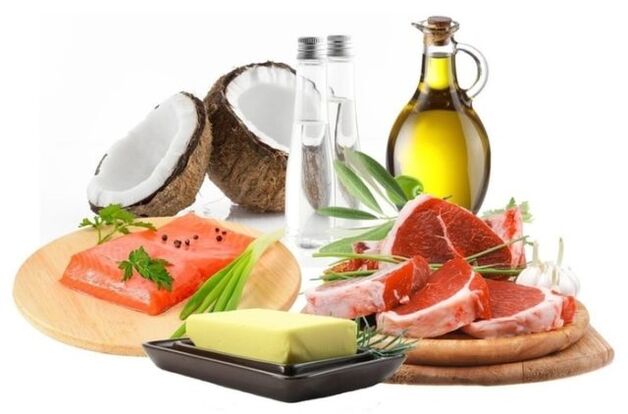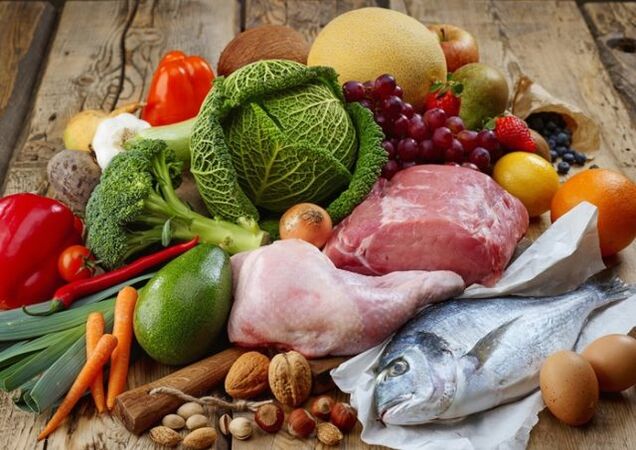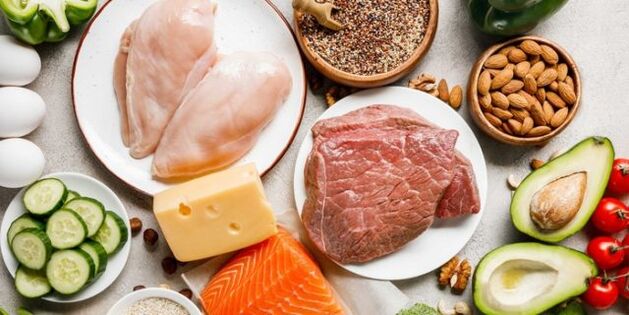Today, one of the most fashionable and common ways to lose weight is by following a ketogenic diet. It should be noted that if this diet is observed, a person does not go hungry, instead consuming fatty and high -calorie foods. The positive effect is achieved by limiting the amount of carbohydrates consumed and actually reducing their consumption in food to zero.
ketogenic diet
Research scientists prove that following a ketogenic diet helps with diseases such as: epilepsy, multiple sclerosis, autism, Alzheimer's disease, cancer.

This diet is one type of low carb diet, when the body does not receive carbohydrates with food, it has to consume fat to get energy. In this case, the fat burning process is very effective. Metabolic changes or ketosis, in which the body of ketones go directly to the brain, the body uses energy.
With this diet, blood sugar and insulin levels are reduced, so this diet is also prescribed for diabetics, but only if the patient has type 2 diabetes.
Rules for ketogenic diets
When following a ketogenic diet, you need to follow some simple rules and recommendations, only in this case you can achieve positive results in the shortest possible time.
- One of the main principles of a ketogenic diet is to drink plenty of fluids every day-at least 3-4 liters.
- Any snacks during the day, except for main meals, should be excluded.
- Active exercise is recommended while following a ketogenic diet.
- The amount of protein taken should be gradually reduced and brought to 1. 5 g per 1 kg of weight.
- The level of carbohydrates consumed daily should also be reduced gradually, finally the amount should not exceed 20 g per day.
- The main source of energy in the keto diet is fat, so don’t worry about consuming it.

Approved Products
Following a ketogenic diet, you can eat the following foods:
- Seafood - squid, oysters, crabs, lobster, clams and mussels.
- Fish - salmon, cod, catfish, halibut, mackerel, trout, tuna, flounder. You can eat fish in any form - fried, steamed, boiled and baked in the oven.
- Meat - beef, pork, rabbit, chicken, beef. As in the case of fish, meat can be used in any form - you can cook meat, roast, steak, the only thing to follow is a denser tenderloin.
- Chicken and quail eggs, which can be eaten either fried and boiled.
- Deep - liver, stomach, tongue, heart and lungs, are some of the main sources of nutrients.
- Sausage - bacon, ham, sausage. When buying this product, you should carefully read the composition so that no additives and sugar.
- Raw cheese - goat, cream, mozzarella, cheddar.
- Healthy oils are olive and natural coconut oils. You can also eat avocado oil.
- Peanuts - peanuts, walnuts and pine nuts, cashews, almonds, pumpkin and flax seeds, hazelnuts.
- Vegetables-all green vegetables, low in starch and carbohydrates, in addition, onions and tomatoes are edible.
- Butter and cream.
- Strawberry.
- From the drink you can drink green tea, weak black tea, still mineral or boiled water.
Prohibited Products
The following foods should not be eaten while on a ketogenic diet:
- Products that contain large amounts of sugar: juices, drinks, sweets, cakes, marmalade, sweet pastries, ice cream, marshmallows.
- Foods containing cereals and starches: Wheat flour pastries, breads, cereals, rice and pasta.
- All kinds of fruits.
- All kinds of beans.
- Tubers and root crops: parsnip, carrots, potatoes, Jerusalem artichokes.
- Dietary and low -fat products - they go through several stages of processing, as a result of which they may contain excessive amounts of carbohydrates.
- Sauces like tomato sauce and mayonnaise, because they contain unhealthy sugars and fats.
- Unhealthy fats, their main sources are margarine and processed vegetable oils, so the use of these products should also be eliminated from the diet or at least reduced.
- Alcoholic products. Many alcoholic beverages contain large amounts of carbohydrates, and therefore, their consumption can invalidate all dietary measures.
- Diet foods without sugar. Such products are usually heavily processed and filled with harmful chemical elements.
Before you start following a ketogenic diet, you should consult a specialist, as the list of allowed and prohibited foods may be different for each patient, based on the individual characteristics of the human body.
Ketogenic diet: menu for this week
The estimated weekly menu for people on a ketogenic diet is as follows.
Monday
- Breakfast. Eggs and cheese.
- Lunch. Buttermilk with cream.
- dinner. Chicken breast, cheese and brown rice.
- tea time. Cheese and some nuts.
- dinner. Vegetable salads, fish in any form, garnished with brown rice.

Tuesday
- Breakfast. Omelet, ½ grapefruit, spinach.
- Lunch. Cottage cheese.
- dinner. Vegetable salad, chicken breast, cheese.
- tea time. Cottage cheese.
- dinner. Steak with brown rice, salad with vegetables.
Wednesday
- Breakfast. Omelette, homemade yogurt.
- Lunch. Cheese, nuts.
- dinner. Chicken breast with soup, salad.
- tea time. Kefir, fruits.
- dinner. Fish, salad, brown rice.
Thursday
- Breakfast. Cheese, boiled eggs, oranges.
- Lunch. Homemade kefir.
- dinner. Meat broth, brown rice.
- tea time. Cheese, almonds.
- dinner. Fish, broccoli.
Friday
- Breakfast. Boiled eggs with salsa.
- Lunch. Bacon or ham.
- dinner. Meat casserole with vegetables and mushrooms, salad.
- tea time. Kefir, salad.
- dinner. Chicken breast, rice
Saturday
- Breakfast. Omelette, salad.
- Lunch. Cheese sandwich.
- dinner. Ground soup, fish.
- tea time. Cheese, hazelnuts.
- dinner. Pork steak, toast.
Sunday
- Breakfast. Fried eggs, oatmeal or cereal porridge.
- Lunch. Kefir and fruits.
- dinner. Vegetable soup with meat, chicken breast.
- tea time. Kefir and boiled beef.
- dinner. Fish, salad, brown rice, cheese.
The pros and cons of this diet
Following a ketogenic diet has several pros and cons that must be considered before starting such a diet.
Advantage:
- Diet is easily accepted, because a person, observing it, is not hungry.
- A small amount of carbohydrates taken reduces insulin production, thus preventing the risk of cardiovascular disease.
Disadvantages:
- Uncontrolled adherence to a ketogenic diet is fraught with a decrease in the level of acidity in the blood, which in turn can lead to the development of ketoacidosis, which in most cases ends in the death of the patient. However, this phenomenon is rare, especially in diabetics.
- The condition of ketosis is dangerous for human health, because in this case the load on the kidneys is greatly increased, and therefore there is a risk of developing urolithiasis and osteoporosis.
- It is impossible to follow this diet for a long time, because a person begins to experience digestive problems - constipation and nausea due to constant consumption of fatty foods.

Contraindications
It is impossible to follow a ketogenic diet for disorders such as: pathology of the cardiovascular system, liver and kidney disease, diabetes mellitus, metabolic disorders, progressive encephalopathy.
Before you start following a ketogenic diet, you need to consult an expert, weigh the pros and cons, and be prepared for it. When following a diet, to avoid unpleasant consequences, it is necessary to always consult with your doctor and strictly follow all his recommendations.































